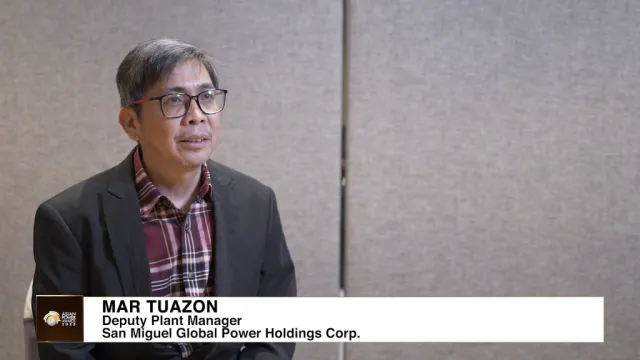
Southeast Asia embraces solar power
By Alexander LenzA number of countries in Southeast Asia such as Thailand, Malaysia, the Philippines and Indonesia have begun to pursue wide-scale investment in solar power.
With abundant sunlight almost daily, Southeast Asia's solar power players are guaranteed a consistent and effective return on investment, all the while making an enormously positive contribution to the preservation of the environment through the substitution of fossil fuels for power generation with state-of-the-art solar technology.
Even on cloudy days, particularly during the rainy season, the latest technological advances in photovoltaic (PV) cells ensure that users are able to rely on solar power 365 days a year to supplement their energy needs. Also, through the growing proliferation of solar power farms, they are able to contribute to the generation of electricity for distribution via the national grid.
Encouraged mainly by progressive government incentives to invest in and utilise solar power installations, numerous entrepreneurs, state agencies and private individuals are setting new benchmarks for the industry, at home and abroad.
Feed-in tariff is key
These government-led incentives generally include a feed-in tariff (FiT) mechanism, corporate income tax holidays, customs and duty exemptions and guaranteed access to the electricity grid. However, it is the FiT incentive system that is key. With this policy, a power producer receives a premium for a period of 10 to 20 years for every kilowatt-hour (kWh) of electricity generated from a renewable resource that is fed to the national grid.
Thailand, for instance, has adopted an adder policy where it pays solar power generators an additional 6.5 baht/kWh, on top of the wholesale electricity tariff.
Malaysia is likewise looking at an all-in tariff rate of between RM0.85 or RM0.95 per kWh for megawatt-scale systems, and up to RM1.23 per kWh for very small solar systems.
Similarly, a rate of 17.95 pesos per kWh is now under final discussion in the Philippines. Both Malaysia and the Philippines are expected to implement their FiT programmes by this year.
Favourable response
The market has since responded very favourably to these incentives: To date, the Ministry of Energy in Thailand has received applications for over 3 gigawatts of solar plants, which represent six times the existing national target for solar energy.
In the next three years, the Philippines is finalising a target of installing between 50 and 100 megawatts (MW) of solar power capacity, but already has as much as 537MW of proposals for solar plants lodged with the Philippine Department of Energy.
Malaysia similarly has a target to install 29MW of solar installations starting this year and 46MW next year. Gauging from the interest in the public forums recently conducted, solar applications in Malaysia are likewise expected to exceed this target.
Indonesia, on the other hand, has taken a slightly different route. Despite the absence of a national feed-in tariff policy, the government, through the national electricity utility PT PLN, announced this year that it will set up communal grid-connect solar power plants on 100 small islands across the country and potentially 1,000 more in other islands the following year.
For the 100-island programme, PT PLN expects to invest around Rp9 billion to construct solar power plants on each island, requiring a total investment of Rp900 billion for the entire project. Besides these 100- and 1,000-island programmes, PT PLN has announced that it will provide 340,000 rural households in eastern Indonesia with small solar systems, which represent a total investment of around Rp1.2 trillion (US$138.76 million).
Safety first
Safety in power generation is of paramount importance, and with stringent regulations and professional installation, solar power generation is virtually risk-free, unlike fossil fuel or nuclear power generation options. Recent history has shown that power generation facilities are extremely vulnerable to catastrophic events.
One of Thailand's most forward-thinking investments in solar power generation is the recently-completed Solarta 3MW Sai Sena Solar Park in Ayutthaya, 70km north of Bangkok.
This solar park produces enough energy to power 1,530 Thai homes with its production potential of 4,471 megawatt-hours of clean energy each year, while also saving a phenomenal 1,971 tonnes of carbon emissions annually.
Thailand's defining solar power project
This defining project, which is home to 40,000 solar modules, shows the future of solar power generation in Thailand and has become a model incubator for potential investment throughout the region.
The park is anticipated to provide a double-digit return on investment over a period of 25 years, and already it has outperformed expected energy production to date. Power generated at the park, which was the first privately-owned of its kind in Thailand, is fed to the mainline electricity grid of the Provincial Electricity Authority of Thailand (PEA).
As a sign of investor confidence in this financially-viable future energy source, in July last year, Ratchaburi Electricity Generating Holding PCL, a leading independent power producer in Thailand, took a 60 percent stake in the 3MW park through the acquisition of a stake in the plant from private developers Yanhee Solar Power Company Ltd.
The PEA has in principle already approved further developments of this kind by Yanhee Solar-associated companies worth more than US$100 million (3 billion baht), indicating the scale of progress made in this field in Thailand.
Solarta (the Yanhee Solar and Ratchaburi Electricity venture) is currently developing even more solar energy parks in Thailand. A second 12.4MW park is now under construction in Nakhon Pathom province, which will be more than four times as large as the first park. The turnkey solar expertise will once again be provided by Conergy and Annex Power.
True costs
One of the most significant aspects of the launch of these solar park projects is proof that investors in emerging market power generation, led by entrepreneurs and utilities, have come to understand that the true cost to generate power should be assessed in terms of the cost produced per unit of electricity. This is measured in kWh (kilowatt-hour) instead of cost per unit of installed capacity, which is measured in Wp (watt-peak).
The sole job of a solar panel is to generate electricity and we therefore believe the most valid way of calculating power output should involve the actual amount of power that each panel generates under average, onsite and real conditions, and not in artificial science laboratory environments as power is fed to the grid.
We also stress to our clients worldwide that the quality of the components, which include the solar panel, inverter and mounting system, is key to long-term return on investment. This, coupled with the most professional installation infrastructure available and supreme attention to plant design and engineering, will determine the effectiveness of the power generation capability and also make a direct contribution to the bottom line.
Put simply, cheaper solar panels and sub-standard infrastructure may lead to short-term cost savings, but in the medium to long term, the quality of the panel, inverter and supporting infrastructure will influence the quality and consistency of the investment returns.
Another factor to consider when investing in long-term solar power projects is risk. It is essential to manage the risks to protect the investment, and this can be done by taking out bespoke insurance policies that cover against damage from floods, typhoons, etc., and also disruption to business either through social factors or prolonged low sunlight days, which affect output and therefore the profitability of the business.
Potential bottlenecks
Solar energy's growth potential in the region can be fully realised only if crucial measures related to the broader power infrastructure are initiated. Expanding into photovoltaics and renewable energy will require some infrastructure changes, as most power grids in Southeast Asia are designed primarily for centralised power systems.
The addition of fluctuating and decentrally fed-in solar energy must be accommodated for and integrated into the power grid. By implementing innovations related to building a reactive power capacity, improved steering of load and generation and the expansion to intelligent grids, costs related to these required grid upgrades can be kept to a minimum.
Another challenge that the solar industry faces is the perceived high cost of solar energy. For this reason, driving costs down is a permanent effort. The industry has roughly reduced its costs to between 15 and 20 percent per year on average over the past 10 years. Conergy achieves cost reductions by integrating the key components of a solar system, running its factories as efficiently as possible, and also sourcing parts of the products from lower-cost countries.
Grid parity
R&D efforts in the industry are also aimed at increasing module efficiency and further accelerating cost reductions. With all these initiatives, grid parity--the point at which solar power generation is equal in cost to household electricity tariffs--should be reached in the next few years, especially in Asian markets with relatively high electricity costs.
Furthermore, expanding into renewable energy minimises a country's exposure to international fuel price fluctuations and to energy shortages in general. Money has to be invested to build renewable energy plants, but the benefits should outweigh the costs over the long term.
The future is green energy
While industrialised nations in Southeast Asia will continue to be dependent on fossil fuels to meet the majority of their power generation requirements in the near term, green energy from renewable power generation sources is increasingly being factored into the planning for future needs and growth. Sustainable, cost-efficient green energy has become mainstream.
Investors and consumers alike are, more and more, aware of the need to protect the environment and gradually move away from dependence on fossil fuels for power generation. This means that entrepreneurs have the opportunity to offer investors the option of green-powered environments, be they retail developments, industrial estates or private housing.
The "green dollar" is gaining significant influence and many investment funds are seeking ethical investments that can illustrate an ever-increasing concentration on green energy.
From a simple-looking PV panel, a whole new generation is being catered for.




















 Advertise
Advertise








